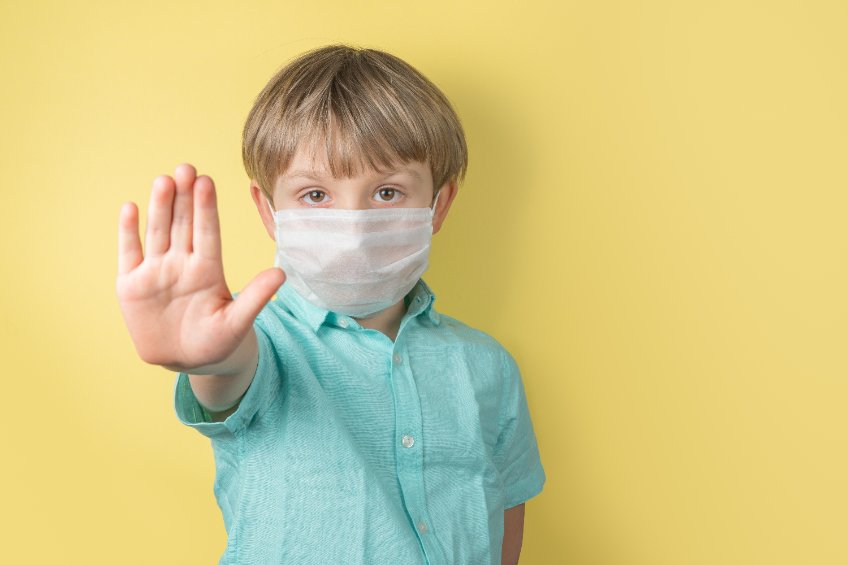The response to Covid-19, not the infectious SARS-CoV-2 virus, caused a negative and perhaps lasting impact on the speech and language development for some children.
When federal and local governments and businesses started to respond to the pandemic in 2020 with school and business closings, mask mandates and social distancing it caused a drastic change in the environmental surroundings for our children. Our children learn speech and language from interactions with the many peers and adults they encounter and from new experiences and places. Once we realized that the environmental changes were going to endure, we became concerned about the speech and language development of children.
Now, two years later, we are seeing the impact firsthand. And research studies are starting to be released that show conclusively that early development has been impaired by environmental conditions brought on by the pandemic. It is unclear from the research data if the observed declines or impairments are temporary or long-term. Regardless, it is essential to understand the situation, so that parents can help their children catch up if they are experiencing any speech delays or if lockdowns and mandates return.
Here is a list of Covid-19 responses that fundamentally changed the environment around our children and had a negative impact on speech and language development.
Covid-19 Response 1 – Daycare, nursery, pre-school, and school disruptions and prolonged closings
 The long closures and disruptions of daycares, pre-schools, and schools reduced or completely eliminated meaningful social interactions for many kids during critical developmental months and years. This was especially true of only children with no siblings. Social interactions are crucial for language development, understanding, and expressing words. Social interactions are also critical for pragmatic development, the ability to clearly communicate feelings, thoughts, and ideas. Making eye contact, making and reading gestures, and smiling are pragmatic skills that start developing at a young age and are essential for communication.
The long closures and disruptions of daycares, pre-schools, and schools reduced or completely eliminated meaningful social interactions for many kids during critical developmental months and years. This was especially true of only children with no siblings. Social interactions are crucial for language development, understanding, and expressing words. Social interactions are also critical for pragmatic development, the ability to clearly communicate feelings, thoughts, and ideas. Making eye contact, making and reading gestures, and smiling are pragmatic skills that start developing at a young age and are essential for communication.- School closures caused children with speech and language issues to lose treatment time with their school-based speech-language pathologist.
Covid-19 Response 2 – Social Distancing
- Social distancing has prevented parents from setting up play dates for their children. Play dates are chances for social interactions where children learn how to take turns, share, and play with others. Social distancing has canceled activities like camps, boy and girls scouts, sports, and dance classes. These are all rich learning experiences.
- Social distancing canceled in-person speech and language therapy as well. Teletherapy mitigated some of this, but some treatments need to be in person.
Covid-19 Response 3 – Stay-at-Home / Work-from-Home Mandates
- Stay-at-home mandates have led to reduced physical activity for our children which impairs motor development, motor coordination, visual processing, language development, and socio-emotional processing.
- Stay-at-home mandates caused many parents to lose their jobs. Parents who lost jobs during the pandemic experienced even greater stress, depression, anxiety as well as food and housing insecurity. This situation causes parents to make tough choices – Food and medicine or speech therapy?
- Work-from-home policies demanded that parents take on the dual roles of childcare and employee at the same time. This dynamic has been challenging for many working parents. These working parents often turn to passive screen time to keep their kids busy while they work. And the dual role during the pandemic increased parental stress. Parents who are stressed often have less patience with their children or less energy to fully engage.
- The stay-at-home mandates, school and daycare closures, and work-from-home policies have led to excessive use of mobile phone apps, tablet apps, gaming systems, and television to pass time replacing rich learning experiences like sports, dance classes, music classes, boy and girl scouts, etc. Despite advances in technology and apps that teach, young children still learn to talk and communicate best through interactions with other people. A study by Chonchaiya and Pruksananonda found that children who watched more than 2 hours of TV per day were six times more likely to have language delays. We think that apps and TV are fine as long as the child is spending at least as much time conversing with other children and parents are spending time talking to their children.
Covid-19 Response 4 – Mask Policies and Mandates
- Masks worn in school or daycare settings hide non-verbal cues and muffle words. This may have a negative impact on early developmental skills including, language processing, facial processing, and socio-emotional processing, but there are no studies currently showing the impact. That said, we also know that visually impaired children develop speech and language skills at the same rate as peers who can see, so masks may not be a major issue.
The Kidmunication Point
The first several years are crucial for language development. It’s the time when the brain is most receptive to learning a language and building communication skills. After, it is much more difficult for someone to develop language skills which can lead to reduced vocabulary development and expressive language issues. This is the reason why younger children have been hit really hard by the pandemic.
What can you do? Spend time engaging your child in play, books, and rich conversation daily. Describe their activities as they play and narrate your everyday activities using specific, descriptive language as they observe you cooking, cleaning, working, gardening, etc. Observing your child, listening to your child, and expanding on their play schemes are vital to their continued speech and language development.
If you think that your child is experiencing speech delay, call for an evaluation.


 The long closures and disruptions of daycares, pre-schools, and schools reduced or completely eliminated meaningful social interactions for many kids during critical developmental months and years. This was especially true of only children with no siblings. Social interactions are crucial for language development, understanding, and expressing words. Social interactions are also critical for pragmatic development, the ability to clearly communicate feelings, thoughts, and ideas. Making eye contact, making and reading gestures, and smiling are pragmatic skills that start developing at a young age and are essential for communication.
The long closures and disruptions of daycares, pre-schools, and schools reduced or completely eliminated meaningful social interactions for many kids during critical developmental months and years. This was especially true of only children with no siblings. Social interactions are crucial for language development, understanding, and expressing words. Social interactions are also critical for pragmatic development, the ability to clearly communicate feelings, thoughts, and ideas. Making eye contact, making and reading gestures, and smiling are pragmatic skills that start developing at a young age and are essential for communication.